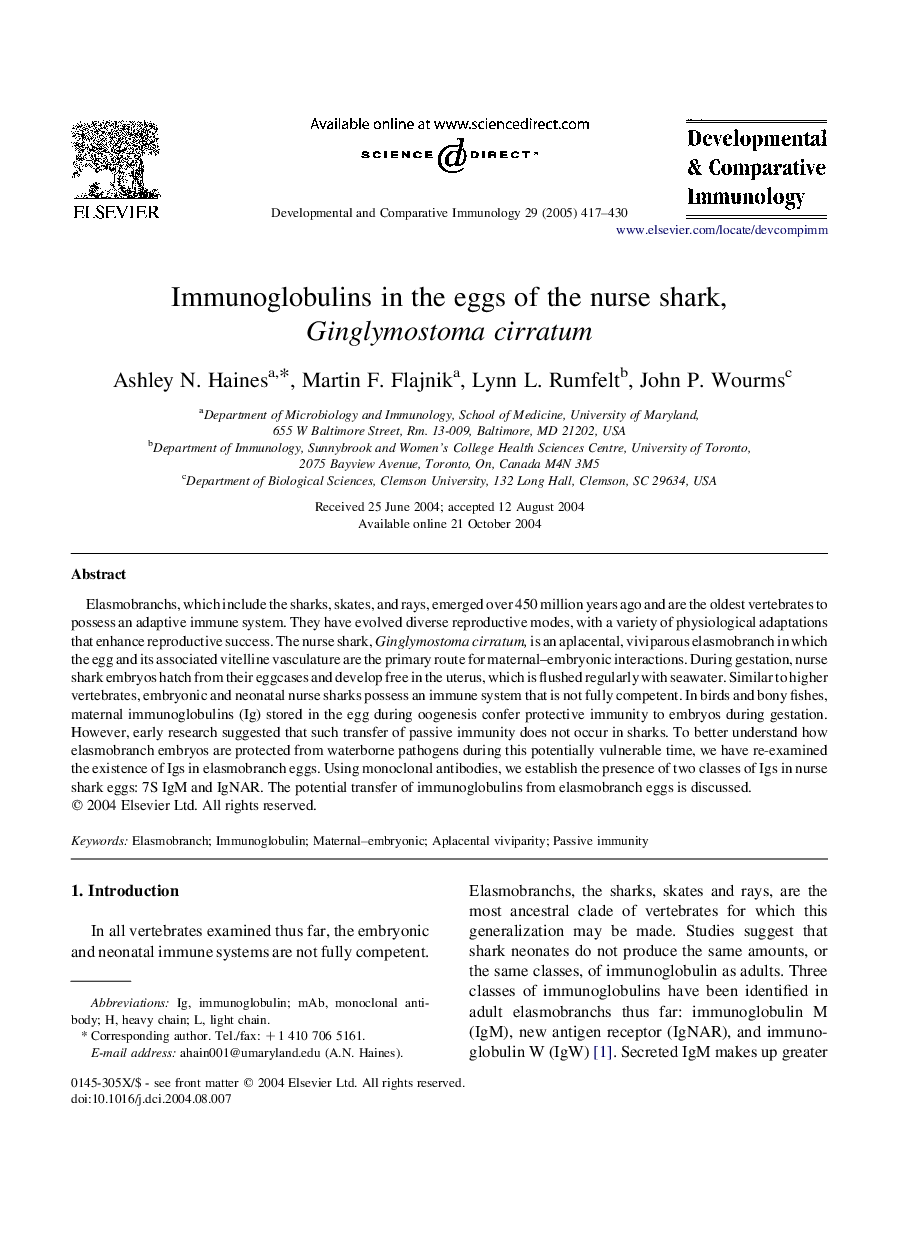| Article ID | Journal | Published Year | Pages | File Type |
|---|---|---|---|---|
| 8978173 | Developmental & Comparative Immunology | 2005 | 14 Pages |
Abstract
Elasmobranchs, which include the sharks, skates, and rays, emerged over 450 million years ago and are the oldest vertebrates to possess an adaptive immune system. They have evolved diverse reproductive modes, with a variety of physiological adaptations that enhance reproductive success. The nurse shark, Ginglymostoma cirratum, is an aplacental, viviparous elasmobranch in which the egg and its associated vitelline vasculature are the primary route for maternal-embryonic interactions. During gestation, nurse shark embryos hatch from their eggcases and develop free in the uterus, which is flushed regularly with seawater. Similar to higher vertebrates, embryonic and neonatal nurse sharks possess an immune system that is not fully competent. In birds and bony fishes, maternal immunoglobulins (Ig) stored in the egg during oogenesis confer protective immunity to embryos during gestation. However, early research suggested that such transfer of passive immunity does not occur in sharks. To better understand how elasmobranch embryos are protected from waterborne pathogens during this potentially vulnerable time, we have re-examined the existence of Igs in elasmobranch eggs. Using monoclonal antibodies, we establish the presence of two classes of Igs in nurse shark eggs: 7S IgM and IgNAR. The potential transfer of immunoglobulins from elasmobranch eggs is discussed.
Related Topics
Life Sciences
Biochemistry, Genetics and Molecular Biology
Developmental Biology
Authors
Ashley N. Haines, Martin F. Flajnik, Lynn L. Rumfelt, John P. Wourms,
